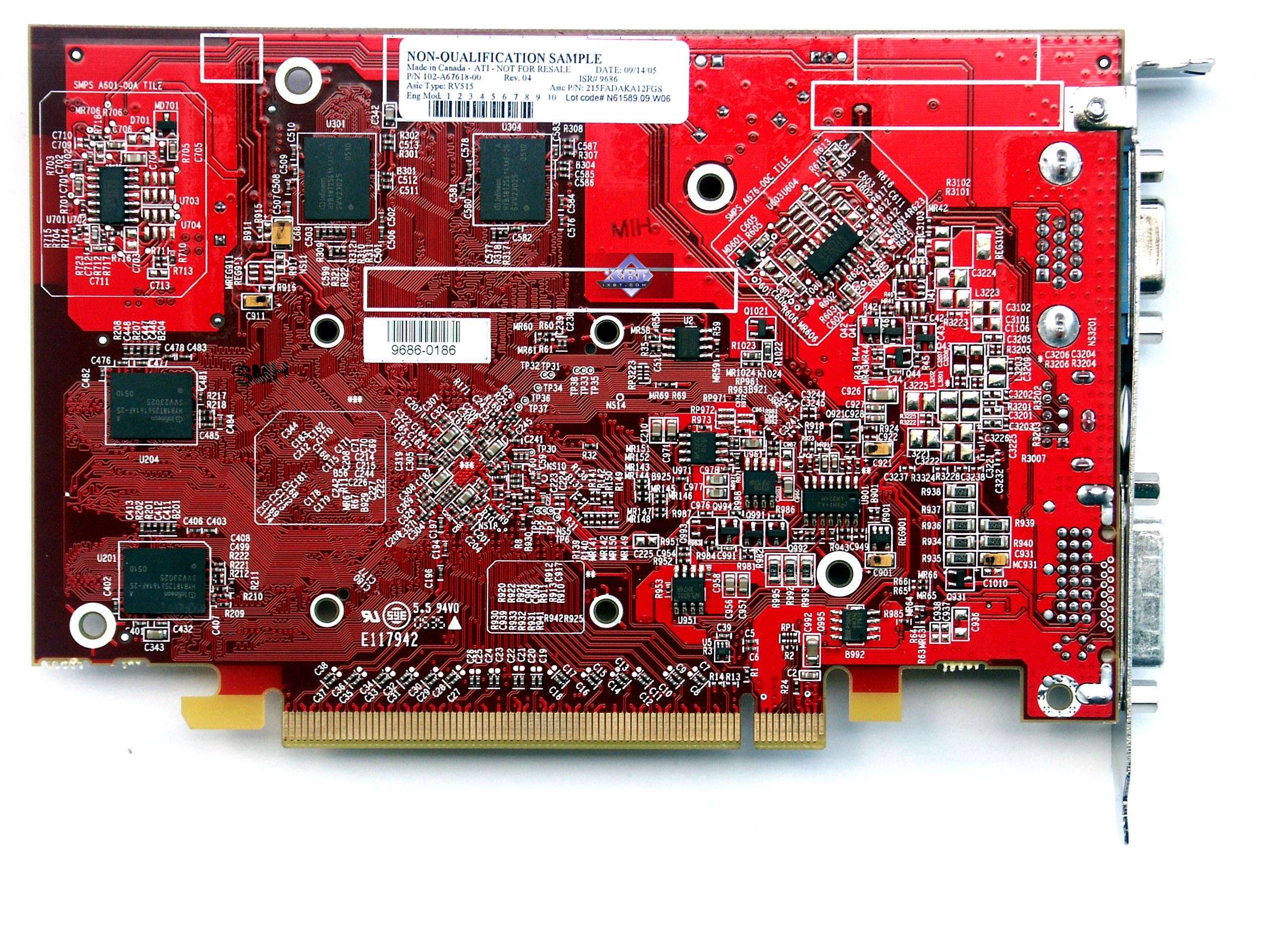| Uploader: | Gardalkis |
| Date Added: | 17 January 2014 |
| File Size: | 67.6 Mb |
| Operating Systems: | Windows NT/2000/XP/2003/2003/7/8/10 MacOS 10/X |
| Downloads: | 95920 |
| Price: | Free* [*Free Regsitration Required] |
Like its predecessor X, the R chip carries 4 "quads" 4 pipelines eachwhich means it has similar texturing capability if at the same clock speed as its ancestor, and the NVIDIA series. UVD 7 [18] [d].
ATi Radeon X Pro PCI-E Video Card - Reviews, Specifications, and Pictures -
Changes necessary for SM3. ATI opted to fit the cards with either MiB or MiB on-board memory foreseeing a future of ever growing demands on local memory size. Support in this table pfo to the most current version. Unlike the X, the X has 16 pixel shader processors as well, and equal ratio of texturing to pixel shading capability.
ATI Radeon X1300 Pro (256MB, AGP)
As is typical for an ATI video card release, a selection of real-time 3D demonstration programs were released at launch. The problem had been almost random in how it affected the prototype chips, making it quite difficult to finally identify.
By using this site, you agree to the Terms of Use and Privacy Policy. Webarchive template wayback links.

Along these ring buses are 4 "stop" points where data exits the ring and going into or out of the memory chips. It also gains three extra vertex shaders, bringing the total to 5 units.
Ruby's latest nemesis, Cyn, was composed ofpolygons.
Retrieved from " https: Using a Linux distribution a series of open source Radeon drivers are available. The RV 1x300 a 3: For example, the X uses 4 "quads". The R is the foundation for a line of DirectX 9. The R5xx family introduced a more advanced onboard motion-video engine.
Around the chip there are two bit ring buses running at the same speed as the DRAM chips, but in opposite directions to reduce latency. The X was based on the R core and was sold as an ultra-low-budget part. From Wikipedia, the free encyclopedia. The chips have 4 texture units4 ROPs4 pixel shadersand 2 vertex shaderssimilar to the older X - X cards.
Login | Community
With chips such as RV and R, where the number of shader units per pipeline triples, the efficiency of pixel shading drops off slightly because these shaders still have the same level of threading resources as the less endowed RV and R Radeon R5xx Acceleration v. The chip's single "quad" has 3 pixel shader processors per pipeline, similar to the rv15 of R's 4 quads.
This series is the budget solution of the X series and is based on the RV ai. Not only are they fully Shader Model 3 capable, but ATI introduced some innovative advancements in shader threading that can greatly improve the efficiency of the shader units.
R, however, differs with its central controller arbiter that connects to the "memory clients". See article on R's pixel shaders. HDCP is mandatory for the output of certain audio formats, placing rsdeon constraints on the multimedia setup.

R and R had nearly identical memory controller designs, with the former being a bug fixed release designed for higher clock speeds. Because of its smaller design, these cards also offer lower power demands 30 wattsso they run cooler and can be used in smaller cases.
The X d1550 X series fixes several flaws in the X design and adds a significant pixel shading performance boost. The chip also ups the vertex shader number from 6 on X to 8. Its advantage over X is both lower power consumption and heat output. At the end of the pipeline, the texture addressing processors are now decoupled from pixel shader, so any unused texturing units can be dynamically allocated to pixels that need more texture layers.

No comments:
Post a Comment